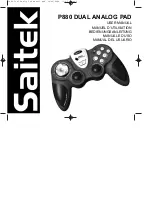
Danaher Motion
06/2005
Appendix B
M-SS-005-03 Rev
E
185
Q
UERY
Point variables, properties and vectors return a value, so they can all be queried through
printing or assignment into a compatible point variable or read-write property.
Common Shared SCARA As Group Axnm = A1 Axnm = A2 Axnm = A3 Axnm = A4 Model = 4
Common Shared PointVar1 As Joint Of XYZR
Dim Shared PointVar2 As Joint Of XYZ
Dim PointArr[4] As Joint Of XYZR
PointVar1 = PointArr[2]
PointVar2 = {23.4, 60, 42}
PointArr[1] = SCARA.PositionCommand
SCARA.Tool = #{10, 20,30, 0}
PRINT PointVar2, SCARA.Tool, {100.3, 20}
Æ
{23.4 , 60 , 42} #{10 , 20 , 30 , 0} {100.3 , 20}
P
LUS
The point plus operator is used like any other data type. It adds each element of the first
point with each element of the second point. The result is a point.
?(1,2)+(2,4)
Æ
(3,6)
M
INUS
The point minus operator is used like any other data type. It subtracts each element of the
first point with each element of the second point. The result is a point.
?(1,2)-(2,4)
Æ
(-1,-2)
M
ULTIPLICATION
The point multiplication operator is used like any other data type. It multiplies each element
of the first point with a number. You can only multiply a point with a single number (one-
dimensional number). The result is a point.
?2*(2,4)
Æ
(4,8)
D
IVISION
The point division operator is used like any other data type. It divides each element of the
first point with a number. You can only divide a point with a single number (one-dimensional
number). The result is a point.
?(2,4)/2
Æ
(1,2)
?2/(2,4)
Æ
(1,0,5)
C
OMPOUND
(:)
Is an operator specific for points, which should be operated between two locations of the
same size (or robot type).
? #{-56.5 , -104.7 , 89.5} : #{ 0.0, -104.7 , -0.5}
Æ
#{-56.5 , -209.4 , 89}
L
IMITATIONS
MOD (modulus), ^ (power), logic and bitwise operators cannot be used for points.
Points cannot be used as condition in flow control statements and event definitions.
Points cannot be recorded.










































